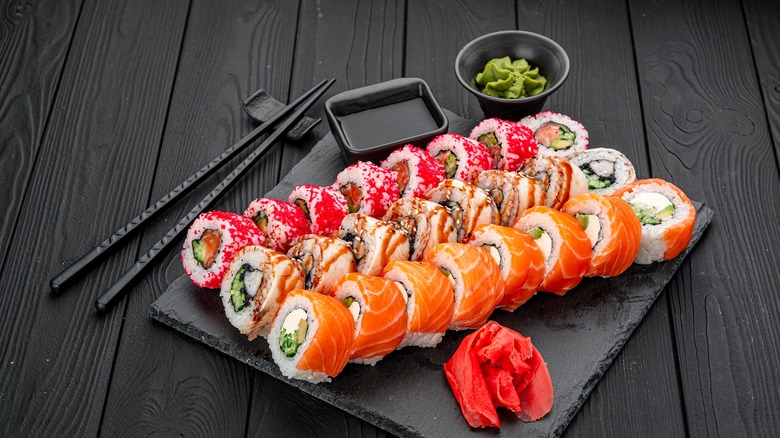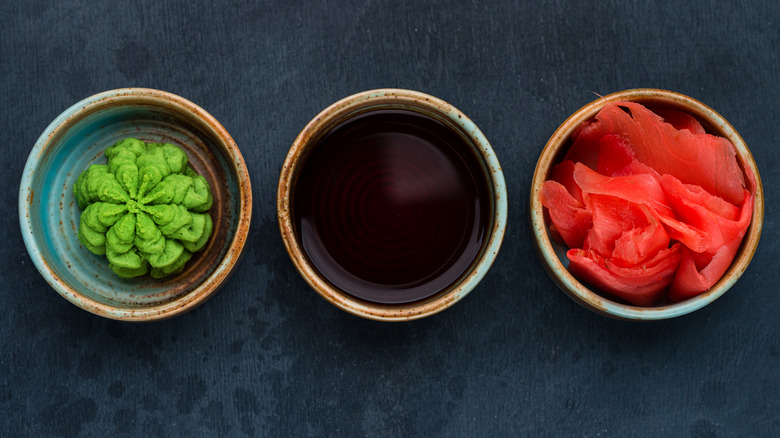Why You Should Think Twice Before Mixing Wasabi Into Your Soy Sauce
You're no Mr. Miyagi with your chopsticks. You won't be catching a fly with them, but you can snatch the last grain of rice on your plate. While you may think you're all set to eat sushi at your favorite local restaurant, chances are you are making (at least) one sushi-eating faux pas.
A few rules for eating sushi are common sense. First, wash your hands, even if you plan to use chopsticks — many sushi restaurants will even provide a hot towel for your hands, according to MasterClass. If you plan to use chopsticks and they are wooden, snap them apart and place them on the plate (via PureWow). Never put them on the table, nor leave them resting in a bowl with the ends sticking out. While there is no rule about filling the soy sauce dish, it's general practice to do so while waiting for your meal to arrive. Once the sushi is placed in front of you, there is no right order in which to eat it, advises TripSavvy. However, if you are eating the pieces with your fingers, the thumb and middle finger should be used. This method allows the diner to feel the texture of the sushi and keeps the piece whole.
But, before you place the delicious piece of sushi in your mouth, there is the matter of how to handle the little mound of green wasabi on your plate.
To mix or not to mix?
Before you go mixing wasabi in with your preferred soy sauce, you should know it's not the proper method, according to MasterClass. Instead, take the piece and dab it into each of the condiments separately. If you are having sashimi, make sure you dip it fish-side down, and if it's a maki roll, dip it gingerly, as it will quickly absorb what it touches.
At nicer restaurants, it's likely wasabi has already been added to each piece of sushi by the chef. If you really like the taste, you can add more, but TripSavvy advises against using too much because it indicates that you think the sushi does not taste very good on its own. To add additional wasabi to your sushi, TripSavvy says to use a chopstick or a piece of ginger to spread it on the sushi piece lightly. Another reason to be careful with your wasabi application is that traditional sushi restaurants (particularly those in Japan) use pure wasabi, per MasterClass. In the United States, the "wasabi" is typically is often a mix of horseradish, mustard flour, cornstarch, and food coloring.
Next time you are preparing to eat your salmon nigiri, feel free to add a touch of wasabi to the piece for a little extra spicy flavor, but keep that green paste far from your soy sauce dish for a proper experience.

